Sealife guideThe bull sharkCarcharhinus leucas
Last updated on 09/10/2024 at 10:58 PM
Taxonomy
- Common name: Bull shark, Zambezi shark
- French name: Requin bouledogue, requin du Zambèze
- Spanish name: Tiburón toro
- Scientific name: Carcharhinus leucas (Müller & Henle, 1839)
- Family name: Carcharhinidae
- Order name: Carcharhiniformes
- Class name: Elasmobranchii
Description
The bull shark, also known as the Zambezi shark, is a relatively large species of shark. The bull shark typically measures around 10 feet in length but can reach a maximum size of 13 feet, with females generally being larger than males.

The bull shark (Carcharhinus leucas) is also known as the Zambezi shark © Fiona Ayerst | Dreamstime.com
The bull shark has a stocky, streamlined body with a wide, flat head, giving it a bulldog-like appearance, which is where it gets its name. The dorsal side of its body is grayish to brownish, while its ventral side is whitish.
An adult bull shark weighs around 500 pounds, though some specimens may weigh even more.
Geographic range
Bull sharks inhabit warm tropical, subtropical and temperate waters around the globe and are found in the Atlantic, Indian, and Pacific oceans.
Habitat
As a coastal species, the bull shark prefers shallow waters near shorelines. It frequently ventures into brackish estuaries and swims upriver into deep rivers and streams. It is also a pelagic shark occasionally found far offshore.
Bull sharks are typically encountered at depths around 100 feet but can dive as deep as 525 feet.
Diet
An opportunistic predator, the bull shark feeds on a wide range of prey, including other shark species, marine and freshwater fish, sea turtles, marine mammals such as dolphins, squid, and seabirds. Bull sharks are also known to scavenge on animal carcasses.

The bull shark is a relatively large species of shark © Nicolás Sánchez Biezma | Dreamstime.com
The bull shark is considered highly dangerous due to its aggressiveness, though human attacks are rare despite media attention (Reunion island between 2011 and 2021, Green Cay near Nassau in the Bahamas in 2022, Noumea in New Caledonia in early 2023).
Reproduction
The bull shark is a viviparous species, meaning that, like humans, embryos develop inside the female's body. After a gestation period of around 10 to 12 months, the female gives birth to about a dozen baby sharks, each approximately 2 feet long.
Did you know ?
Bull shark populations are declining primarily due to fishing, accidental bycatch in gillnets and longlines and the degradation of their habitats.

As a coastal species, the bull shark prefers shallow waters near shorelines © Hoatzinexp | Dreamstime.com
The bull shark is unique in its ability to thrive in both saltwater and freshwater environments, making it an euryhaline species.
The bull shark is listed as many other marine species within The IUCN Red List of threatened species. The bull shark appears in the IUCN Red List since 2021 within the category Vulnerable !
Within the same genus
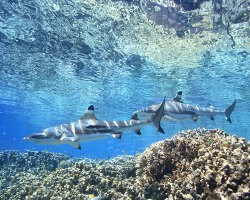
Blacktip reef shark
(Carcharhinus melanopterus)
(Carcharhinus melanopterus)
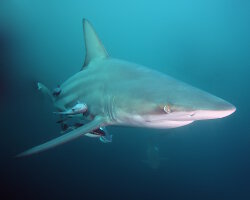
Blacktip shark
(Carcharhinus limbatus)
(Carcharhinus limbatus)
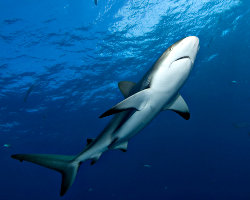
Caribbean reef shark
(Carcharhinus perezi)
(Carcharhinus perezi)

Copper shark
(Carcharhinus brachyurus)
(Carcharhinus brachyurus)
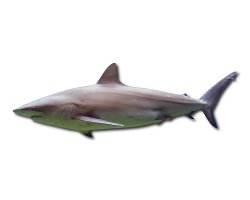
Dusky shark
(Carcharhinus obscurus)
(Carcharhinus obscurus)
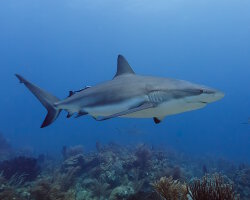
Grey reef shark
(Carcharhinus amblyrhynchos)
(Carcharhinus amblyrhynchos)
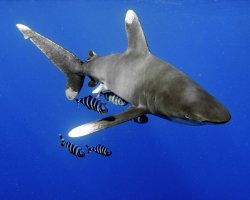
Oceanic whitetip shark
(Carcharhinus longimanus)
(Carcharhinus longimanus)
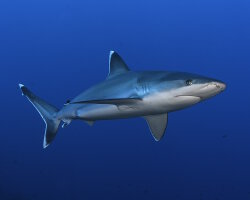
Silvertip shark
(Carcharhinus albimarginatus)
(Carcharhinus albimarginatus)
Within the same family
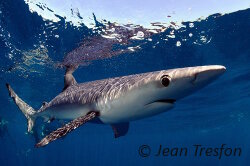
Blue shark
(Prionace glauca)
(Prionace glauca)
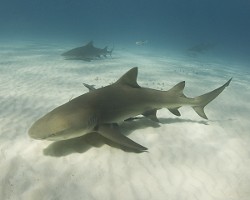
Lemon shark
(Negaprion brevirostris)
(Negaprion brevirostris)
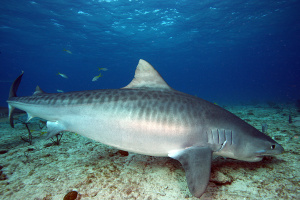
Tiger shark
(Galeocerdo cuvier)
(Galeocerdo cuvier)

Whitetip reef shark
(Triaenodon obesus)
(Triaenodon obesus)
Discover also
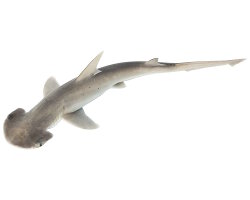
Bonnethead shark
(Sphyrna tiburo)
(Sphyrna tiburo)
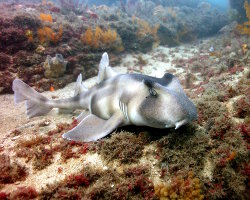
Crested hornshark
(Heterodontus galeatus)
(Heterodontus galeatus)

Greenland shark
(Somniosus microcephalus)
(Somniosus microcephalus)

Horn shark
(Heterodontus francisci)
(Heterodontus francisci)

Scalloped hammerhead
(Sphyrna lewini)
(Sphyrna lewini)

Small-spotted catshark
(Scyliorhinus canicula)
(Scyliorhinus canicula)

Spotted wobbegong
(Orectolobus maculatus)
(Orectolobus maculatus)

Zebra bullhead shark
(Heterodontus zebra)
(Heterodontus zebra)
Our latestUpdates

Friday, December 19th 2025
The magic of Christmas decorations
Discover Christmas decorations in Florida: giant trees, illuminated palm trees, magical light displays and tropical settings to experience the holiday magic under the sun.

Monday, December 15th 2025
The dusky shark
Discover the dusky shark, one of the world's largest coastal sharks, and learn why this powerful predator is essential to marine ecosystems.

Friday, December 12th 2025
Christmas magic at Disney hotels
Experience the magic of Christmas at Disney hotels: enchanting decorations, giant Christmas trees, dazzling lights and a festive holiday atmosphere.
Photo of the Day

Tarpon de l'Atlantique
(Megalops atlanticus)
(Megalops atlanticus)
